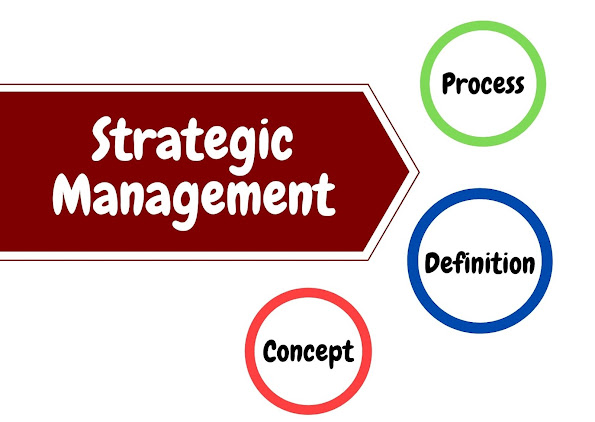Define strategic management? what is the strategic management process?
Strategic Management is an ongoing process of managing an organization strategically. this involves a set of management decisions and actions that result in the formulation and implementation strategies that determine the performance and success of the organization.
STRATEGIC MANAGEMENT PROCESS
- Step 1: Identifying the Organization’s Current Mission, Goals, and Strategies
- Step 2: Doing an External Analysis
- Step 3: Doing an Internal Analysis
- Step 4: Formulating Strategies
- Step 5: Implementing Strategies
- Step 6: Evaluating Results
- Identifying the Organization’s Current Mission, Goals, and Strategies
Every organization needs a mission—a statement of its purpose. Defining the mission forces managers to identify what it’s in business to do. For instance, the mission of Avon is “To be the company that best understands and satisfies the product, service, and self-fulfillment needs of women on a global level.” The mission of Facebook is “a social utility that connects you with the people around you.”These statements provide clues to what these organizations see as their purpose.
- Doing an External Analysis
Managers do an external analysis so they know, for instance, what the competition is doing, what pending legislation might affect the organization, or what the labor supply is like in locations where it operates. In an external analysis, managers should examine the economic, demographic, political/legal, sociocultural, technological, and global components to see the trends and changes. Once they’ve analyzed the environment, managers need to pinpoint opportunities that the organization can exploit and threats that it must counteract or buffer against. Opportunities are positive trends in the external environment; threats are negative trends.
- Doing an Internal Analysis
Now we move to the internal analysis, which provides important information about an organization’s specific resources and capabilities. An organization’s resources are its asset financial, physical, human, and intangible—that it uses to develop, manufacture, and deliver products to its customers. They’re “what” the organization has. On the other hand, its capabilities are its skills and abilities in doing the work activities needed in its business“how” it does its work. The major value-creating capabilities of the organization are known as its core competencies. Both resources and core competencies determine the organization’s competitive weapons.
After completing an internal analysis, managers should be able to identify organizational strengths and weaknesses. Any activities the organization does well or any unique resources that it has are called strengths. Weaknesses are activities the organization doesn’t do well or resources it needs but doesn’t possess
. The combined external and internal analyses are called the SWOT analysis, which is an analysis of the organization’s strengths, weaknesses, opportunities, and threats. After completing the SWOT analysis, managers are ready to formulate appropriate strategies—that is, strategies that (1) exploit an organization’s strengths and external opportunities, (2) buffer or protect the organization from external threats, or (3) correct critical weaknesses.
- Formulating Strategies
As managers formulate strategies, they should consider the realities of the external
environment and their available resources and capabilities in order to design strategies that
will help an organization achieve its goals. The three main types of strategies managers will
formulate include corporate, competitive, and functional.
- Implementing Strategies
Once strategies are formulated, they must be implemented. No matter how effectively an organization has planned its strategies, performance will suffer if the strategies aren’t
implemented properly.
- Evaluating Results
The final step in the strategic management process is evaluating results. How effective have the strategies been at helping the organization reach its goals? What adjustments are necessary? After assessing the results of previous strategies and determining that changes were needed,
Ursula Burns, Xerox’s CEO, made strategic adjustments to regain market share and improve her company’s bottom line. The company cut jobs, sold assets, and reorganized management.





Social Plugin